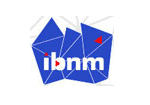SQLite Maestro 11.3 released
Mar 9, 2011
| Prev | Next |
|
SQL Maestro Group is happy to announce the release of SQLite Maestro 11.3, a powerful Windows GUI solution for SQLite server administration and database development. Please consider the list of new features implemented in this version since the last official release: |
Server management extensions:
- SQLite Maestro has been successfully tested with the latest SQLite server versions. The latest available server library (3.7.5) is now included into the installation package.
-
Support for SQLite full-text search extension modules has been implemented (both FTS3 and FTS4 are supported). These extensions allow users to create special tables with a built-in full-text index (also known as FTS tables). The full-text index allows the user to efficiently query the database for all rows that contain one or more words, even if the table contains many large documents.
To display the FTS "shadow" tables (%_content, %_segdir, etc), turn on the Show system tables option in the Edit Database Profile dialog. Picture 1. FTS support
Picture 1. FTS support -
Now it's allowed to generate updatable views for your tables automatically. Moreover, the Insert, Update, and Delete operations can be enabled or disabled at your choice. It is possible to create a view for a single table or for several tables at once (even for all the tables in the database). To accomplish these tasks, use the popup menu of the corresponding node at the Explorer tree and the Main Menu | Object | Generate updatable views accordingly.
 Picture 2. Updatable views generation
Picture 2. Updatable views generation
Interface improvements:
- Table Editor features an ability to upload files as BLOBs into a table. The file names must contain the information on the record they need to be placed to: the files need to be named in the same manner and their names have to include content of one or several table columns that can uniquely identify each row.
-
Data Import: starting with this version it becomes possible to import data from any database accessible via an ODBC driver or OLE DB provider, such as SQL Server, MySQL, Oracle, MS Access, Sybase, DB2, PostgreSQL, etc. Let's look through some details of the new feature:
-
To import data in this way, you have to specify a connection string and select appropriate identifier quote characters to escape improper symbols and blanks in object names according to the source database (for example, double quotes for Oracle and PostgreSQL, backticks for MySQL, or square brackets for SQL Server and MS Access).
 Picture 3. Data Import: connecting to an ODBC data source
Picture 3. Data Import: connecting to an ODBC data source - Another thing to note is that this kind of import completely supports BLOBs (if they are supported by the ODBC driver / OLE DB provider used).
-
To import data in this way, you have to specify a connection string and select appropriate identifier quote characters to escape improper symbols and blanks in object names according to the source database (for example, double quotes for Oracle and PostgreSQL, backticks for MySQL, or square brackets for SQL Server and MS Access).
- Application Options: now it's possible to specify default directories for data export/import/extract/etc to be used on database profiles creating.
In addition to this, several bugs have been fixed and some other minor improvements and corrections have been made.
Related links:
SQLite Maestro home pageDownload SQLite Maestro
Get SQLite Maestro Tour
Purchase your license of SQLite Maestro today!
| Prev | Next |








